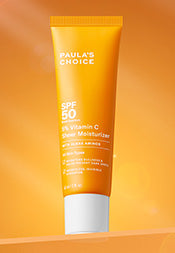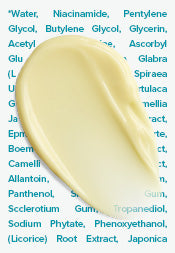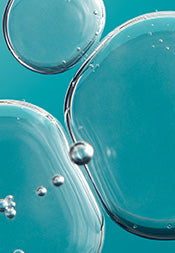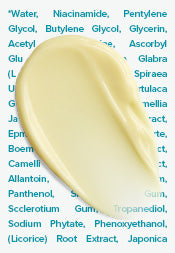We Bust 5 Retinol and Retinoid Myths For Skin
We’re often asked about the dos and don’ts of using retinol: Do alpha or beta hydroxy acid (AHA and BHA) exfoliants “deactivate” retinol or reduce its effectiveness? Should I only use retinol at night? Are retinol products incompatible with vitamin C solutions?
Simply stated, No. We’ve seen no scientific research to indicate any of this is true.
There’s also a common fear that retinol might irritate your skin. Although it’s true that not everyone can use every skincare product with success, the formulation or other problem ingredients are often the culprit—not necessarily the retinol. It's important to choose only well-formulated products that steer clear of irritating ingredients, and to monitor how your skin responds to different strengths of retinol.
Our aim is to help you achieve the best skin of your life, and that starts with accurate information. As always, we turn to research to put an end to any worry or confusion.
Below, we discuss popular skincare myths and misconceptions around retinol for skin, and offer helpful answers to the often-asked question—what does retinol do?
Myth #1: Retinol is an exfoliant for the skin
It’s a popular misconception that retinol is a skin exfoliant. It isn’t, because it cannot break the bonds that hold dead skin cells to the surface. Retinol is an antioxidant in the world of skincare, and an important skin-restoring ingredient that can impact how skin cells mature. As a result, it enhances multiple aspects of your skin, making it look healthier, smoother, and more vibrant.
And, while retinol can cause a flaking reaction for some people, this (often temporary) side effect shouldn’t be mistaken for exfoliation. AHA and BHA help to imperceptibly shed dead skin from its surface. You don’t see or feel healthy, normal exfoliation; you just see smooth, healthy skin.
If you do experience flaking from using retinol, it may be that you’re using a retinol product that’s just too potent for your skin or you’re applying it too often. Switching to a lower strength or applying your current retinol product less often could solve the problem.
Myth #2: You can't use retinol during the daytime
It’s perfectly fine to use retinol products during the day, as long as you wear sunscreen over them. Research has shown that retinol works well under SPF-rated products, and that vitamins A, C, and E—even in combination—remain stable and effective under a broad-spectrum sunscreen .
Remember: Retinol plays its part in helping your skin look younger, but sunscreen is the first and most formidable defence in helping your skin rebuff signs of ageing like wrinkles, uneven skin tone, discolourations, and loss of firmness .
Myth #3: You shouldn't combine retinol with vitamin C
A recent study revealed two important facts: not only did pairing vitamin C and retinol prove effective, but the two worked perfectly together to defend skin against environmental assault when applied under a sunscreen.
The (misguided) skincare myth about combining these ingredients is also based on misconceptions about pH and acidity. Vitamin C, especially ascorbic acid, requires a low pH to remain stable—or no pH, if there isn’t any water in the formula. The result is a more acidic environment, but we know acidity doesn’t deactivate retinol; after all, the skin’s pH is naturally acidic, and retinol is found naturally in skin.
Better yet, research has shown that a combination of vitamins in cosmetics will provide optimal results—including vitamins A (another name for retinol), C, and E . Retinol and vitamin C together (our Clinical 1% Retinol Treatment for example) actually creates a better environment for retinol by stabilising it, and extending its effectiveness. It turns out that using an antioxidant serum with retinol can help your skin reap all of the latter’s benefits. Our Skin BalancingSuper Antioxidant Concentrate Serum With Retinol is one skincare product you can consider.
Myth #4: You can't use retinol with a leave-on exfoliant
No research has ever demonstrated or concluded that AHA or BHA exfoliants make retinol any less effective when used in the same skincare routine. It’s just one of those myths that gets repeated so often that people—even many we consider skincare experts—tend to believe it.
Whenever we see a comment or recommendation about retinol’s incompatibility with AHA or BHA exfoliants, it’s never supported by research. What research does show is that using retinol products with an effective AHA or BHA product increases the benefits of each; it doesn’t decrease them. What's more, this combination can be an effective approach suitable even for those dealing with milia-prone skin.
Myth #5: The pH of AHA & BHA exfoliants reduces retinol's effectiveness and benefits
Well-formulated leave-on exfoliants have a low pH, which is what makes them effective. It’s common for people to wonder if that pH level disrupts retinol’s ability to work its gentle, skin-smoothing magic. Rest assured, it doesn’t.
Just like most skincare myths, this misconception sprang from a misunderstanding about the research. Only one study mentions the issue of pH affecting retinol’s activity, but that study was performed on proteins in a petri dish, not on real skin. It concluded that it’s unknown if these results would be the same on intact skin.
If anything, AHA and BHA help products deliver their vitally important skin-restoring ingredients (like retinol) by removing the dead skin that impedes their absorption.
Learn more about retinol from our complete guide here.
Shop our highly rated range of retinol-containing skincare products.
References for this information
Italian Journal of Dermatology and Venereology, October 2020, pages 676–679
Clinics in Dermatology, April 2019, ePublication
International Journal of Cosmetic Science, February 2017, pages 56-65
Journal of Cosmetic Dermatology, March 2016, pages 49-57
Journal of Drugs in Dermatology, March 2015, pages 271-280
Dermatology, May 2014, pages 314–325
Toxicological Research, March 2010, pages 61–66
The Journal of Pathology, January 2007, pages 241–251
Clinical Interventions in Aging, December 2006, pages 327–348











